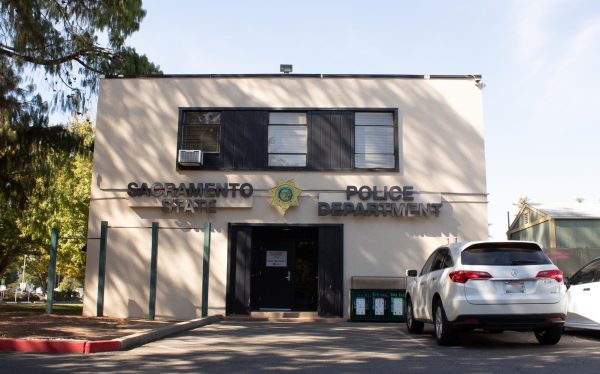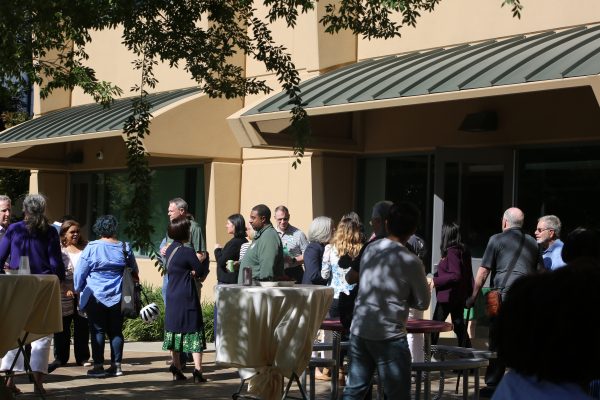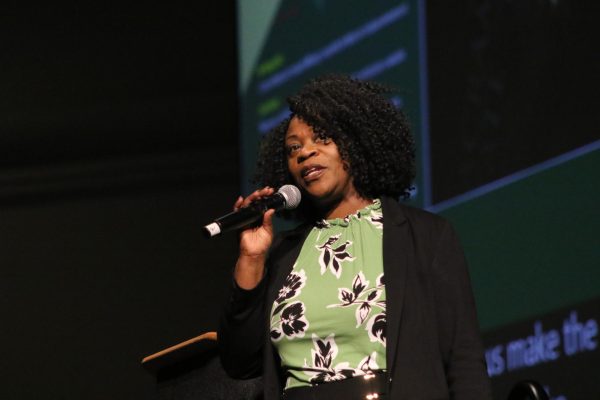Arrest results in alcohol policy being questioned
February 11, 2004
An alcohol-related arrest last week at Sacramento State’s residence halls has many on-campus residents asking what the alcohol policy is and what actions lead to spending an evening in custody.
On Feb. 2, Brian Stearns, 25, a resident of the dorms since 1999, got a first-hand dose of this after getting arrested in Sierra Hall for being drunk in public. According to the policy on Use of Alcoholic Beverages in the Residence Halls, a person of the legal drinking age is only allowed to drink alcohol in the student’s room behind a closed door.
The policy goes on to say that the individuals are responsible for their own actions while drinking and hold a responsibility, as a resident, to help enforce these guidelines.
Stearns was not in his room at the time of his arrest.
“Our officers initially-responded to a complaint of an intoxicated subject being belligerent to staff,” said-University Police Investigator John Hamrick. “Officers found him sitting in a chair in the Sierra Hall recreation room and contacted him.”
Hamrick said the arresting officer administered a preliminary alcohol-screening test that resulted in a .243 blood alcohol content.-
“Stearns said that he had no one immediately available to care for him,” Hamrick said. “Because he was not able to care for himself, he was arrested for public intoxication and booked into the Sacramento County Jail.”
Stearns said the whole situation went a little overboard since he is of the legal drinking age.
“I’ve never known anyone to get arrested in the dorms,” Stearns said. He also said that he hadn’t broken anything or hurt anyone so he didn’t see the big deal, however, he admitted he blacked out and did not remember much of the events leading up to his arrest.
Hamrick said the university police are contacted to handle these situations on a case-by-case basis depending on the circumstances.
Sac State Assistant Director of Housing Jane Heaton agreed and said that the resident advisers handled most incidences of student drinking, and it was mainly a judgment call on their part to call university police.
“We initially call police for an assessment and to get (students) out and some help if they have had too much (to drink),” Heaton said. “We don’t want someone dying from alcohol poisoning. In our minds, it’s better to be safe than sorry.
“We believe in educating the students on the dangers of drinking too much,” Heaton said. “There is no one, two, three you’re out. Some people might pull a fire alarm and be out the first time.”
Heaton said that she feels that in some cases it may have been a one time event and things got a little out of their control. Especially considering more than 70 percent of the residents are 18 or 19 years old and this is their first real time away from home.
“In an educational environment, if a student does have a drinking problem, we may be better able to help them learn about the dangers here than elsewhere if we kicked them out,” Heaton said.
Heaton said that all students are made aware of the drinking policy before they arrive on campus through dorm orientation for both freshmen and transfers, and once on campus, they are all given a handbook that they must sign and agree to read.
According to this handbook, if an underage student gets caught drinking or in possession of alcohol by a resident advisor they are first documented and required to meet with their hall director within a number of days.
They would then be referred to the E-Chug program, an online alcohol awareness program that violators must take, followed by a discussion and a test. Students are also referred to Health Service’s Cyndra Krogen, who leads the alcohol program at Sac State, Heaton said.
“This is no different than living in an apartment — once you step out of your room you are in a public area,” Heaton said. “If (Stearns) had been in an apartment complex and someone called the (police), the police would have responded in the same way.”


































































































































